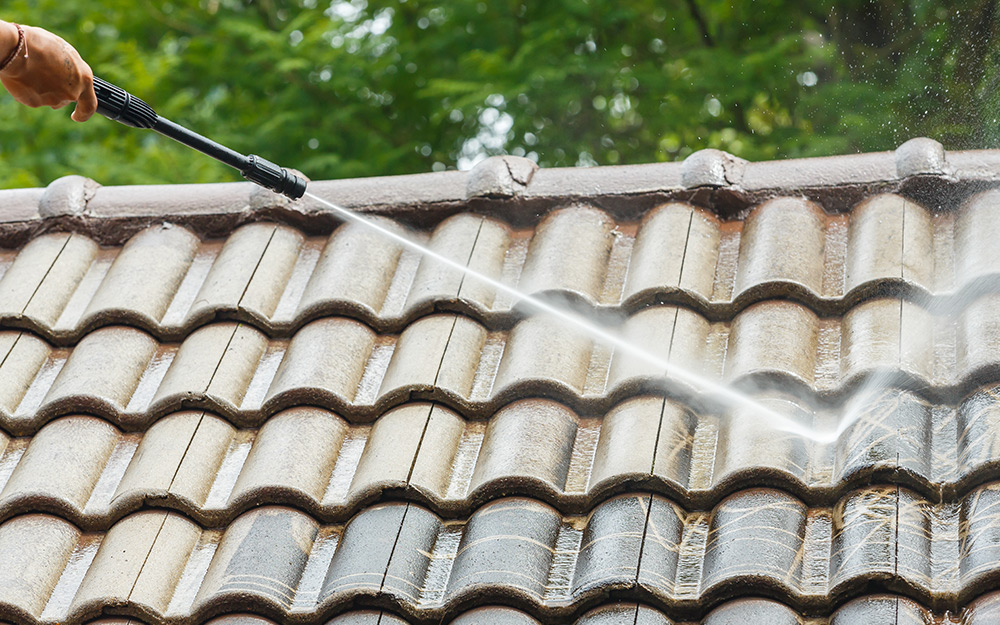Inexpensive Roof Leak Repair - Quick and Effective Solutions
Wiki Article
The Ultimate Guide to Addressing Roofing System Leakages and Protecting Against More Damage

Common Sources Of Roof Covering Leakages
Roof leaks can occur because of different variables, such as harmed tiles, incorrect setup, or blocked seamless gutters. Harmed shingles, commonly triggered by severe weather or normal deterioration gradually, can produce openings for water to permeate via. Improper installation of roofing materials, including flashing and underlayment, can also lead to leakages as voids or incorrect placement can compromise the roofing system's capability to drive away water effectively. Additionally, stopped up seamless gutters can protect against correct water drainage, creating water to swimming pool on the roofing system and ultimately discover its way into the home.
In addition, leakages may arise from broken smokeshaft flashing, skylights, or vents that have worn away gradually. These weak spots on the roofing can allow water to penetrate otherwise correctly maintained or secured. Another usual source of roof leakages is the existence of ice dams, which create when snow thaws and refreezes at the roofing's side, creating a barrier that prevents correct drainage. Recognizing these usual reasons of roof leakages is crucial for effective fixing and prevention approaches.
Determining the Resource of Leakages
When faced with roof covering leaks, identifying the specific source is crucial to successfully address the concern and prevent more damage. Determining the resource of a roof leakage can be difficult as water can get in the roofing system in one area and travel prior to leaking via the ceiling in one more (fix roof leak). As soon as you have recognized the general location of the leakage, inspect the roofing surface area for missing shingles, split blinking, or harmed seals around chimneys and vents.Do It Yourself Fixing Techniques
Upon determining the resource of a roof leak, carrying out effective DIY repair methods is vital to without delay address the issue and avoid additional damages. Among one of the most common DIY repair methods for roofing leaks is covering the affected area with roofing concrete. This approach entails cleansing the location around the leakage, using a charitable quantity of roof cement to the damaged area, and pressing an item of roof covering material or patching product into the cement to create a water resistant seal.One more DIY fixing technique is utilizing roofing sealant to repair minor leakages. Roof covering sealer can be applied along seams, around blinking, and over little holes to avoid water from seeping right into the roofing structure. Additionally, changing damaged or missing tiles can likewise efficiently fix roofing leaks. Thoroughly getting rid of the old tile, using roof cement to the rear of the new tile, and protecting it in position can aid stop further water infiltration. When making use of DIY repair methods, always focus on security by utilizing correct devices and adhering to suggested treatments.
Hiring Specialist Help
Engaging the services of knowledgeable roof covering specialists can give expert services for attending to roofing leaks and guaranteeing detailed repairs. Professional roofing contractors bring a wealth of knowledge and competence to the table, enabling them to accurately detect the origin of the leak and give reliable options. By employing professionals, you can profit from specialized tools and products that may not be readily offered to the typical homeowner. Additionally, roofing specialists are skilled in industry ideal techniques and safety methods, making sure that the repair is executed effectively and without jeopardizing the structural honesty of the roofing system.When choosing a roofer, make sure to research their qualifications, experience, and credibility in the market. Search for specialists that are licensed, guaranteed, and deal guarantees on their job to guarantee quality and satisfaction. By delegating your roof repair service requires to skilled specialists, you can rest ensured that the work will be done right the first time, saving you time, money, and prospective headaches in the future.
Preventative Upkeep Tips
To make sure the long life and durability of your roofing system, executing positive maintenance methods is important complying with the conclusion of professional repair work by experienced roof covering experts. Trim any kind of looming branches to prevent them from creating damage to your roof covering during storms or strong winds. By adhering to these preventative maintenance suggestions, you can extend the life of your roofing system and stay clear of pricey repair work in the future - roof leak.
Conclusion
Finally, addressing roof covering leakages without delay is essential to avoid additional damages to your home. By recognizing the usual root causes of leaks, recognizing the source properly, and using do it yourself repair service techniques or professional aid when needed, you can successfully resolve the problem. In addition, implementing preventative maintenance tips can aid to prevent future leakages and keep the integrity of your roof covering. Taking proactive actions to deal with roof leakages will ultimately conserve you time, money, and tension over time.Incorrect installation of roof covering products, including blinking and underlayment, can likewise lead to leak repair leakages as gaps or wrong placement can compromise the roofing's capability to push back water efficiently. An additional usual reason of roofing system leakages is the existence of ice dams, which develop when snow refreezes and thaws at the roof's side, producing a barrier that prevents correct drainage. Recognizing the resource of a roof leakage can be challenging as water can go into the roof covering in one location and traveling before trickling through the ceiling in another.Upon recognizing the source of a roof leak, executing reliable DIY repair work methods is crucial to promptly resolve the concern and avoid further damages. Roof sealer can be applied along joints, around blinking, and over little openings to protect against water from leaking right into the roofing structure.
Report this wiki page